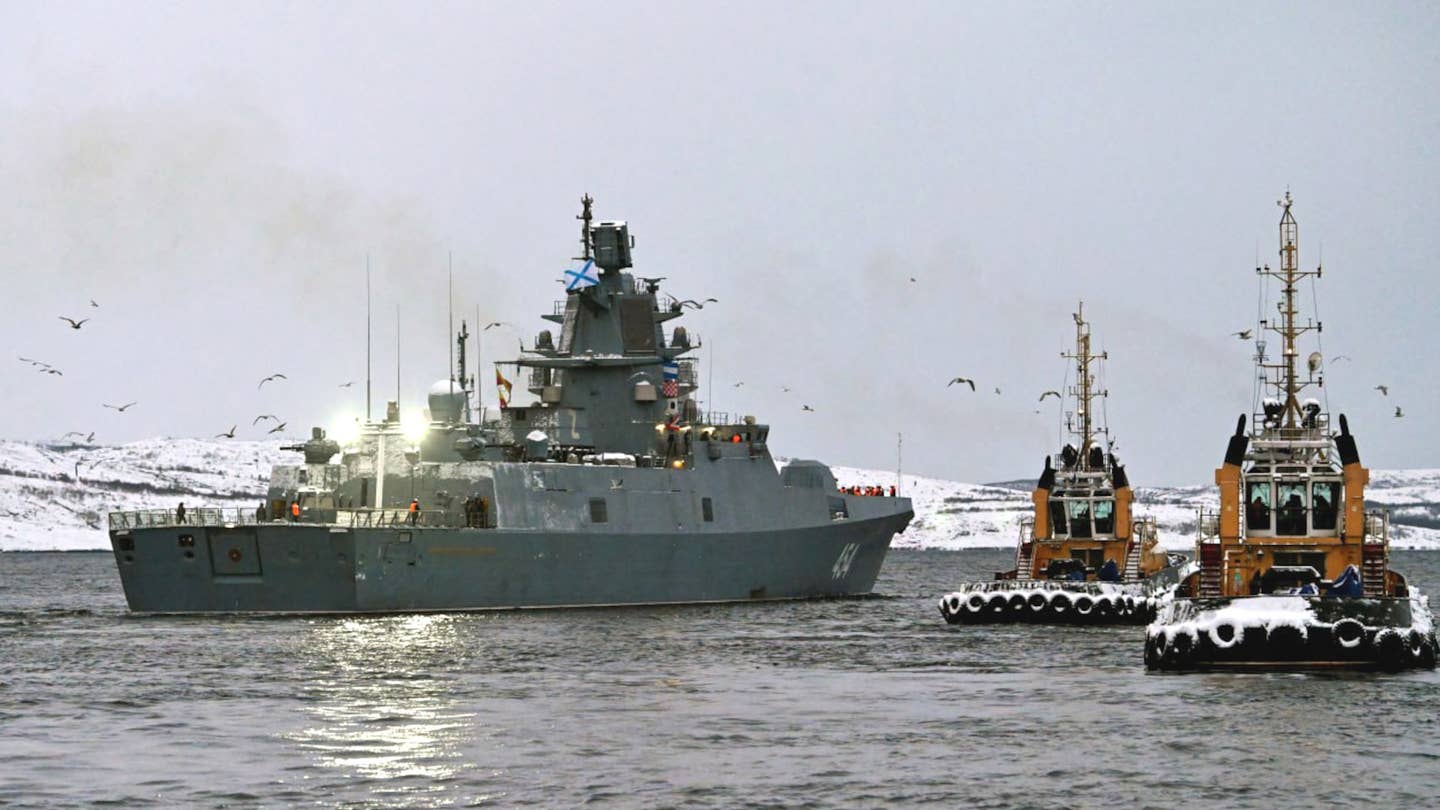On January 4, Russian frigate Admiral Gorshkov armed with the Tsirkon (Zircon) hypersonic missile, set sail to travel across the Atlantic Ocean, Indian Ocean, and the Mediterranean Sea.
Russian Defense Minister Sergey Shoigu announced the far-sea voyage of Admiral Gorshkov at the ceremony marking the frigate’s entry into combat service via video conference. Russian President Vladimir Putin also attended the ceremony, state news agency TASS reported.
The Defense Minister stated that the frigate is equipped with guided missiles and intended to handle deep sea and ocean issues.
He emphasized that the primary efforts during the campaign would focus on countering Russia’s threats and maintaining regional peace and stability together with friendly countries.”

President Putin announced on December 21 that the Tsirkon hypersonic missile-equipped frigate would go into service in January 2023. Later the same month, the Northern Fleet said that the vessel had completed preparations for a long-distance voyage.
In May 2022, Russia test-fired a Tsirkon hypersonic missile from Admiral Gorshkov in the Barents Sea and successfully hit the designated target.
The Tsirkon multi-purpose hypersonic missile designed to strike sea and ground targets has a range of over 1000 kilometers and can travel at a speed of Mach 9 (11,113 kilometers per hour).
Earlier in 2020, Russia said that the Tsirkon had reached the mass manufacturing stage. The missile could evade even the most advanced American defenses.
All hypersonic weapons can avoid conventional anti-missile defense systems since they have a low atmospheric-ballistic trajectory.
Given that they considerably reduce the time it takes for the weapon to reach its target and thus lower the amount of time defenders have to react, hypersonic cruise missiles provide new operational challenges for rival or adversarial forces at sea and on land.
Neither the Defense Minister nor the Northern Fleet specified the number of Tsirkon hypersonic missiles that the frigate would be carrying on this voyage.
Captain Igor Krokhmal, the ship’s commanding officer, reported that it was stocked with anti-ship and land-attack versions of the Kalibr subsonic cruise missile family that have been extensively used against targets inside Ukraine.
The Admiral Gorshkov class frigates are equipped with cruise missiles, a 130mm main cannon, the Redut navalized S-350 surface-to-air missile system, the Palash close-in weapon systems, and torpedoes.
There are now three of these warships in the Russian Navy, and seven more are in various stages of construction and outfitting. Six of those are anticipated to be of a better subtype, which will likely include, among other things, a doubled number of vertical launch system cells.
Could The Russian Vessel Bump Into NATO Vessels?
This is not the first time that a warship of Project 22350 has set sail for the Atlantic Ocean. In April 2021, Admiral Kasatonov, attached to the Russian Northern Fleet, completed the tasks of its first long-distance deployment in the Mediterranean Sea and entered the Atlantic Ocean.
The planned voyage of Admiral Gorshkov may seem more like a power projection than anything else, as it comes at a time of escalating geopolitical isolation following the start of its all-out war on Ukraine in February 2022.
However, the far-sea voyage was also significant when the US-led NATO increased its maritime activity in the Mediterranean and the Atlantic Oceans to deter Russia.
For instance, the newest and most advanced aircraft carrier of the United States, i.e., the USS Gerald R. Ford, began its deployment in the North Atlantic in October 2022. Moreover, it assumed the role of the lead vessel in a carrier strike group that included six ships from NATO countries, several US warships, and a submarine.
Later, in November, NATO Navies held month-long maneuvers in the Atlantic and the Mediterranean Sea. These drills included five aircraft carriers and several warships. The carrier activities ranged from anti-submarine and air warfare drills and deck-to-deck aircraft transfers to at-sea resupplying.
At the time, NATO Spokesperson Oana Lungescu said the deployments “demonstrate our ability to project power across the Alliance and to reinforce Allies rapidly.”
Set against the context of Russia’s war against Ukraine, she said: “These carriers deliver deterrence, and they help keep our sea lines of communication open. Our strength sends a clear message that NATO will protect and defend every inch of Allied territory.”

It could then be likely that the Russian Admiral Gorshkov may come across their European peers while on their far-sea voyage aimed at showcasing its strength. However, the vessel would not be able to participate in the operations against Ukraine as Turkey has blocked the entry of ships from the Mediterranean Sea to the Black Sea via the Dardanelles and the Bosporus.
Besides, it is unlikely that Russia would attempt to attack Ukraine from the Mediterranean or do anything to bypass Turkish decisions and authority, given the love-hate relationship it shares with Ankara.
However, it is a significant development in that the ship set sail when the war has become more intense, with Ukraine resorting to long-range strikes and rendering the Russian mainland vulnerable. This may also come as a reminder to the US-led NATO that Moscow has mastered and deployed hypersonic missiles – a feat that they have not been able to achieve yet.
- Contact the author at sakshi.tiwari9555 (at) gmail.com
- Follow EurAsian Times on Google News




